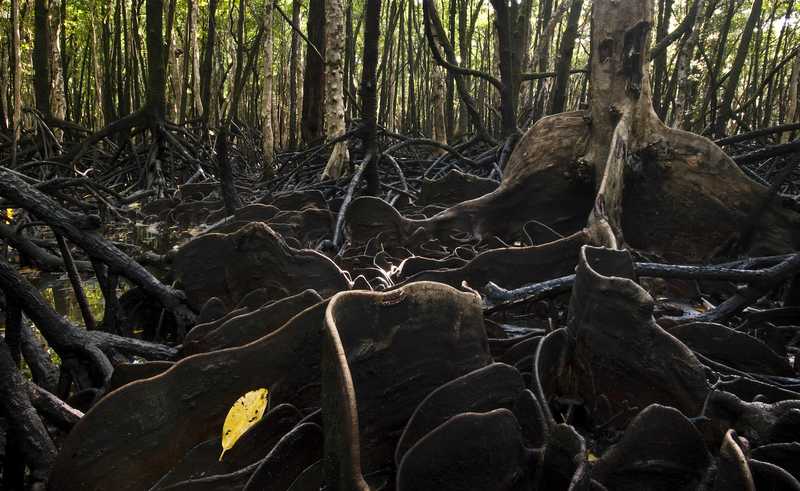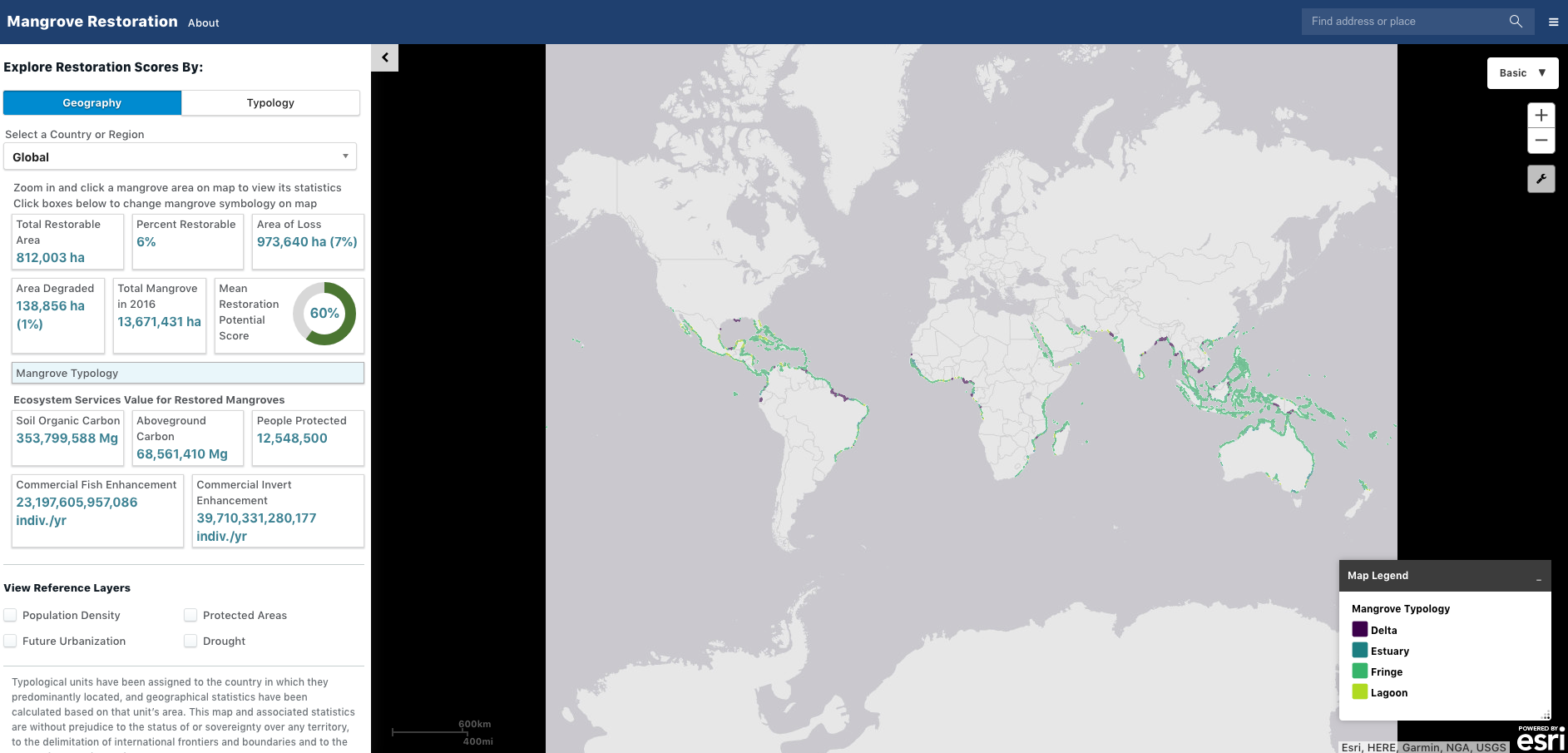
This month, we are focusing on mangroves. Mangrove forests are not only evocative of tropical coastlines, slow-moving waters and brackish water where freshwater and salt water mix. They are indicators of resilience and strength. A new Mangrove Restoration Map shows that restoration of lost mangroves worldwide could lead to the storage of an extra 69 million tonnes of carbon in aboveground biomass.
This month, we are focusing on mangroves. Mangrove forests are not only evocative of tropical coastlines, slow-moving waters and brackish water where freshwater and salt water mix. They are indicators of resilience and strength. These mighty trees form spiralling coastal forests which hug shorelines and save lives during storms. Losing mangroves means losing more than just mangroves. It means losing livelihoods, food security, valuable timber production, coastal defenses and one of our most efficient and important carbon stores on the planet. These powerful shrubs which peak above the water’s edge with twisted exposed roots can store three to four times more carbon than most terrestrial forests. If undisturbed, mangrove soil carbon remains stable for centuries to millennia.

Mangrove forests are found in almost every warm coastal region of the world, but we have sadly lost vast areas. Some have been cleared for agriculture or fish farming, others have been over-exploited for firewood, timber, or charcoal production, often by poor communities. In some places, mangroves have been lost to urban expansion and the development of coastal infrastructure, including roads and ports. Their loss is also our loss. The profits and benefits from loss and degradation are typically short-term, and often only flow to a small number of people. These benefits are dwarfed by the losses as coastal communities lose one of the most productive ecosystems on Earth.
Mangrove loss and degradation can also lead to carbon being emitted back to the atmosphere, with mangroves contributing up to 10% of global emissions from deforestation. A new Mangrove Restoration Potential Map (MRP Map) from IUCN and TNC explores the estimated carbon mitigation benefits of mangrove restoration, both in soil storage and above ground biomass. The latter is the living plant material – trunks, branches and leaves – that makes up a constant carbon store while continuing to add dead matter to the soils below, where the majority of the carbon is stored.
Mangrove losses are such that mangrove restoration is increasingly seen as a critical component of both conservation and shrewd coastal management as well as for climate mitigation a genuine ‘win-win’ opportunity. Where mangroves are degraded rather than lost, they present an opportunity for rapid and effective intervention. Restoration of such areas may require little more than a reduction in or cessation of damaging actions. Some ecosystem services such as disaster risk reduction are still maintained by degraded mangroves, albeit at lower levels. Allowing trees to recover to full diversity and stature will safeguard and enhance these services and prevent the sometimes, disastrous consequences of full loss, such as subsidence and erosion, which can make recovery a challenging and highly costly task.

A new Mangrove Restoration Map shows that restoration of lost mangroves worldwide could lead to the storage of an extra 69 million tonnes (0.069 gigatonnes) of carbon in aboveground biomass and would also help to avoid further emissions of some 0.296 gigatonnes of soil carbon. Such numbers convert to the equivalent of annual emissions from 25 million US homes in sequestration and 117 million homes in avoided emissions. Full restoration of the areas identified could enable:
- Carbon sequestration in aboveground biomass amounting to 69 million tonnes of Carbon, equivalent of annual emissions from 25,000,000 US homes.
- Soil carbon stocks of 296 million tonnes saved through a combination of avoided emissions and sequestration equivalent to emissions from 117,000,000 US homes.
- Addition of commercial fisheries species in mangrove waters totalling 23 trillion young-of-year finfish and 40 trillion crabs, shrimp and molluscs.
- Coastal protection from annual flooding to hundreds of thousands of people.
There is so, so much potential. The Mangrove Restoration Map is a unique interactive tool developed to explore potential mangrove restoration areas worldwide, helping nations identify where the greatest potential is and model what the benefits of restoration for their country could be.

Try out the Mangrove Restoration Map here today.
Read The Nature Conservancy’s policy briefs for a summary document describing the outcomes from the work and the opportunities they present for influencing international policy.
Our next story will look at how mangrove restoration can contribute to climate goals.
(Sources: Briefs and factsheets prepared by IUCN, TNC and the University of Cambridge)